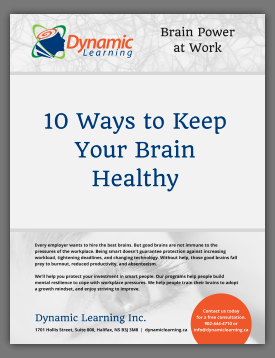Many people complain that they have a “poor memory”, but only when they forget something. You have a fantastic long-term memory, and an effective immediate and short-term memory, but it helps to understand how they work.
Your memory is like an oddly shaped funnel. The top of the funnel is really wide, where our immediate memory processes everything we pay attention to. But we constantly shift our attention every 3 seconds or less, so most of the information in our immediate memory does not get very far down the funnel. That wide funnel narrows very quickly into our short memory and then widens immensely into our long-term memory.

As this diagram shows. Our short-term memory works very well so long as we don’t overload it.
For example, if we are trying to remember a phone number, by repeating the number, we can hold it in our short-term memory long enough to dial the phone. But if we try to hold two phone numbers in our short-term memory at the same time, we would either forget one number and remember the other, or we would get both numbers muddled up together. Nevertheless, some of the information we pay attention to in our immediate memory trickles down the funnel and stays in the short-term memory for a day or two. You can probably remember quite easily what you had for lunch yesterday, but you probably cannot remember what you had for lunch a week ago yesterday nearly as easily.
When you are concentrating, there are two common ways you can quickly overload your short-term memory. One way is by trying to remember what you read as you are reading it. Doing that will overload your short-term memory very quickly, and that overload will block access to your long-term memory. So even though you read the whole chapter or document, you can remember very little of the information after you finish reading. The technique which gets around this potential short-term memory block is to read as quickly as you can understand what you are reading as you are reading it, then immediately look back and make a few quick notes on the key information you want to remember. This is called “Read to Understand, Note to Remember”. See Read Faster, Remember Longer for more information.
The second way many people inadvertently overload their short-term memory is when they are getting ready to write a lengthy document. Most people procrastinate on getting started on a writing task, so the deadline is often close before they sit in front of a blank page. Most people then put a 1 or an A at the top of the page, and although they have been thinking about the topic over several days and have even created sentences in their minds, suddenly they experience “writers’ block”. This is the feeling that you know a lot about a topic, but when you ask yourself to write about it, that often overloads your short-term memory and blocks your access to your long-term memory.
Your long-term memory has an infinite capacity and is a wonderful resource for you so long as you understand that it works on a reminder and re-creation process. That is, so long as you have the right reminder, you can re-create anything you have in your long-term memory.
The Mind Map technique is the answer to both an effective note-taking system to remember what you read and a very effective way of drawing out all your ideas for writing and presenting. See Power Up Your Brain with Mind Maps.
David Rock’s book, Your Brain at Work, is a great read. Until you have a chance to read it yourself, here are some key points from it.
- Prioritize. Your prefrontal cortex, just behind your forehead, is where you do most of your really valuable thinking. As David Rock says, “the prefrontal cortex is the Goldilocks of the brain. It has to have everything just right, or it doesn’t function well.” To use this precious resource to its highest potential, prioritize your most important tasks, then focus on one task at a time. Switching between tasks drains energy from your prefrontal cortex very rapidly, causing you to take longer to complete the tasks and to make more mistakes.
- Remove distractions. Being “always on” – plugged into your phone, email, and social media – leads to exhaustion. Shut them down before you try to concentrate.
- Focus your attention on the most important, sometimes the most difficult, task of the day. Approach it with an alert and interested frame of mind. Imagine the satisfaction of having it done balanced with a mild fear of what could go wrong if it is not done. We tend to “walk toward reward, but run away from punishment”, so use that to keep yourself energized and focused.
- Think rationally. Your conscious mind is constantly talking to you, while your subconscious mind believes every word you say. It is like a rider on an elephant. The rider guides the elephant with his feet behind the elephant’s ears, but the elephant is very powerful, just like your sub-conscious. Instead of distracting yourself (and your subconscious) with irrational thoughts like, “I will never get this done on time,” or “this is awful,” tell yourself, “I have handled more difficult situations than this”, “this is annoying, but it is not awful.” See Disputing Your Irrational Thoughts.
I wish you well in enhancing your powerful brain at work or at school. I would be delighted to receive your comments.


